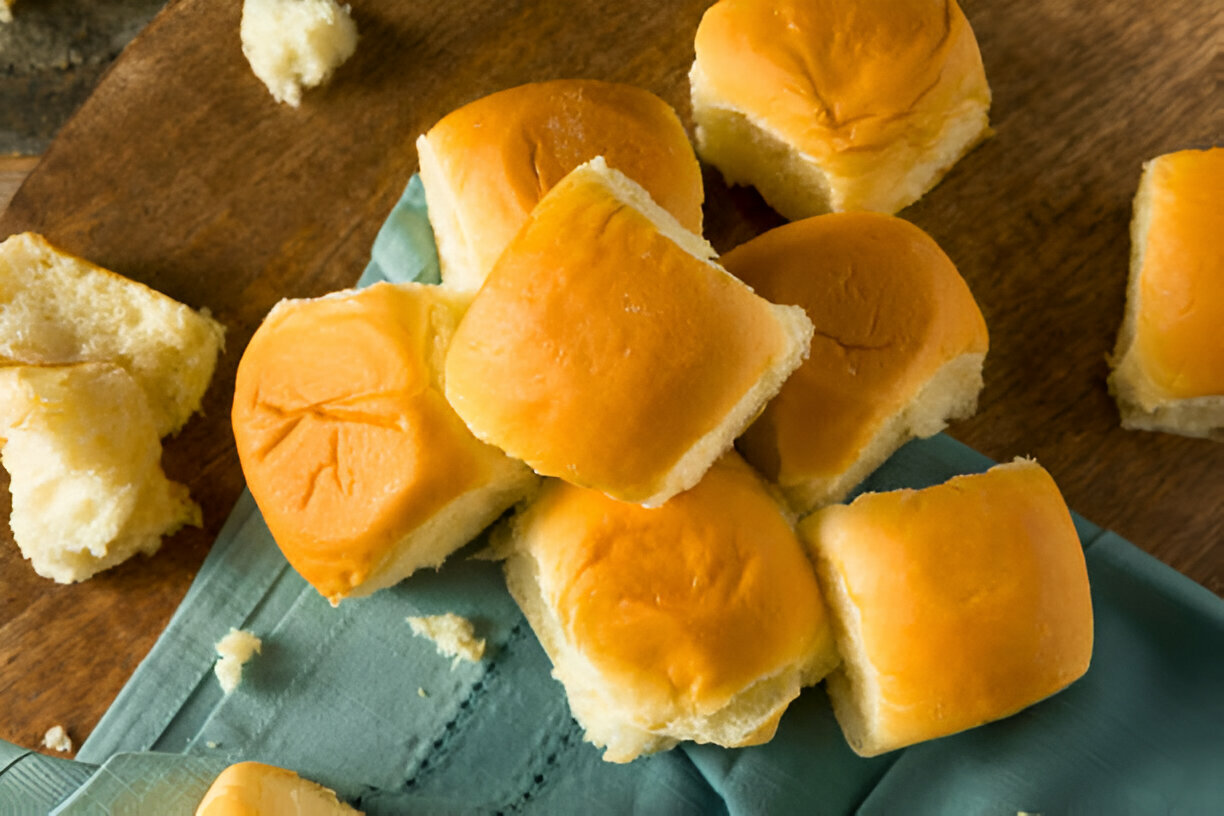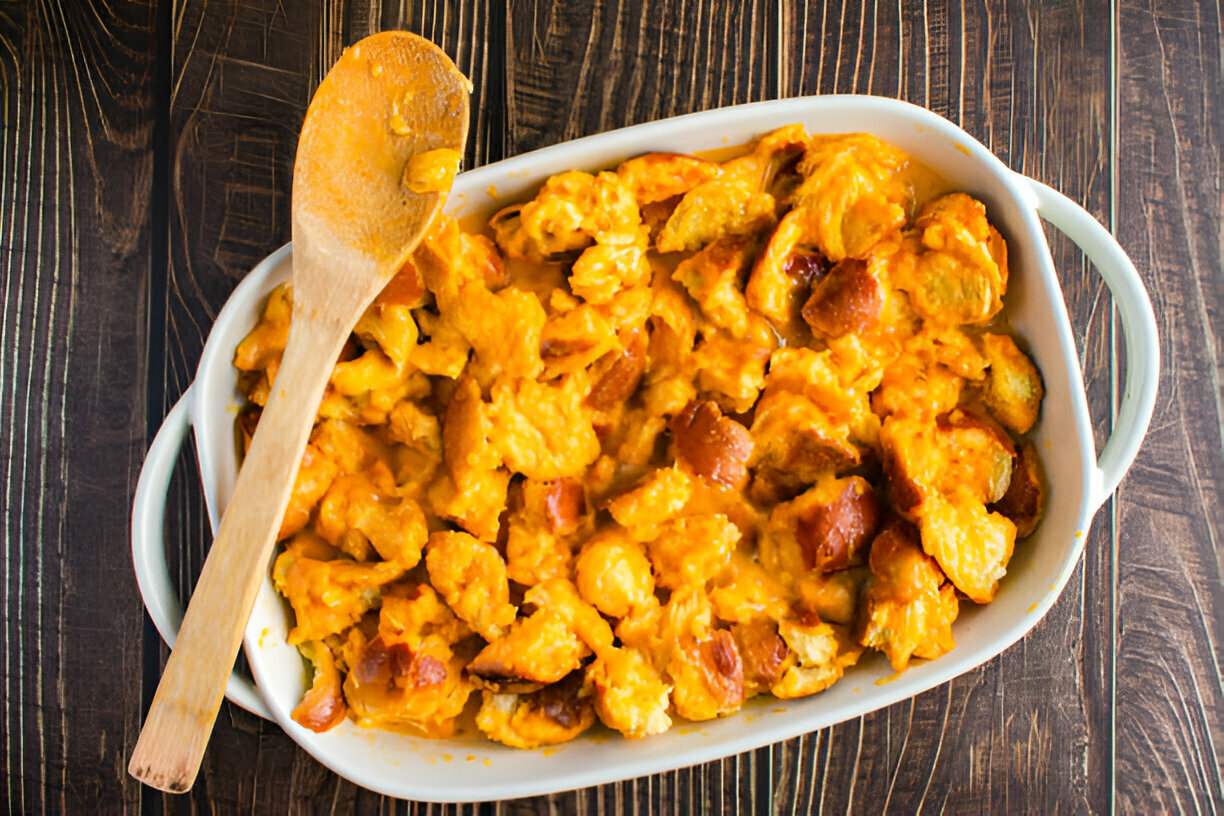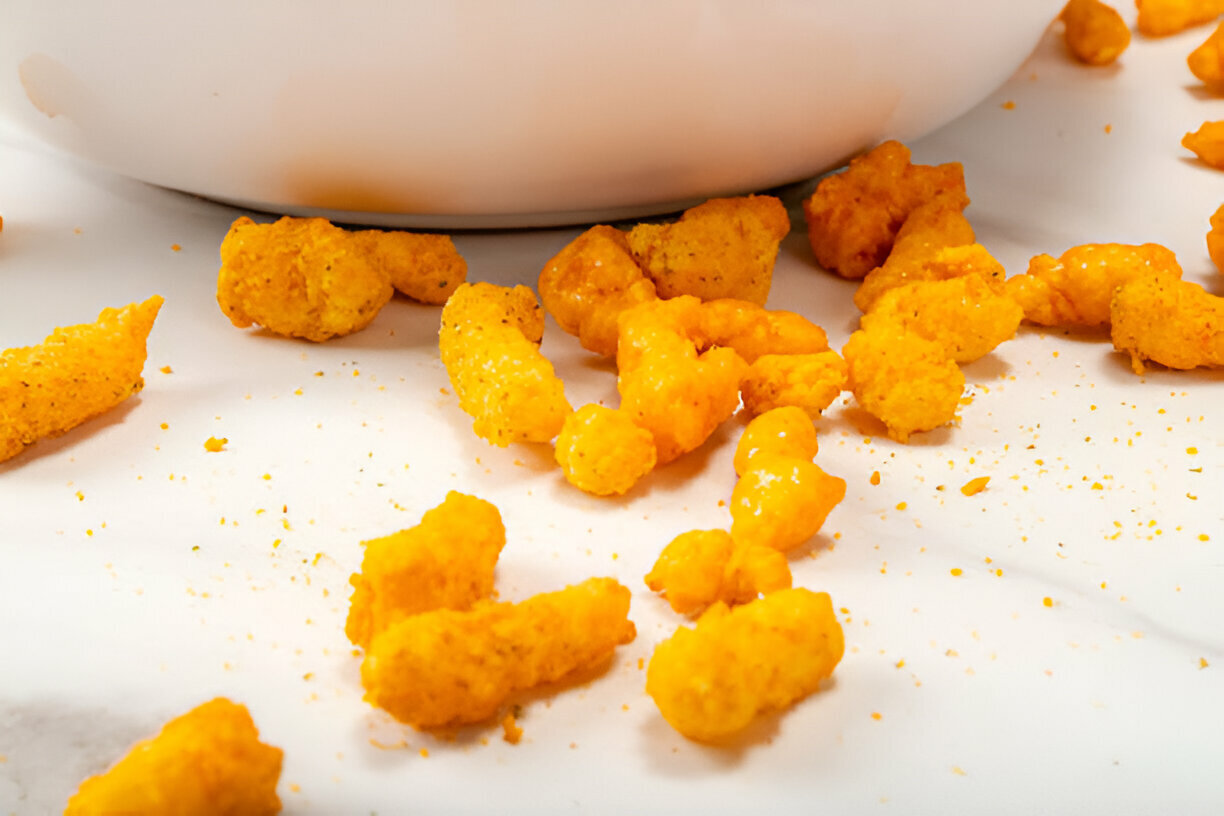Philly Cheesesteak Pasta is a delicious twist on the classic Philadelphia cheesesteak sandwich, merging the rich flavors of tender beef, sautéed vegetables, and gooey cheese with the comforting texture of pasta. This dish brings together the beloved elements of a traditional cheesesteak into a hearty, one-pot meal that's both satisfying and easy to make. With its creamy sauce and savory components, Philly Cheesesteak Pasta appeals to food lovers who enjoy bold flavors and unique interpretations of familiar favorites.
The popularity of Philly Cheesesteak Pasta has surged in recent years, thanks to its versatility and the growing trend of combining different cuisines. It caters to those seeking a quick weeknight dinner as well as adventurous home cooks looking to impress their friends and family. The amalgamation of tender steak, colorful bell peppers, sweet onions, and melted cheese creates an irresistible flavor profile that leaves a lasting impression.
Every bite offers a delightful combination of textures, from the al dente pasta to the juicy beef and the soft, buttery vegetables. Adding the right cheese enhances the creaminess and flavor, making each mouthful a delightful experience. This dish not only satisfies hunger but also evokes the comforting nostalgia of enjoying a classic Philly cheesesteak, making it an ideal choice for gatherings, potlucks, or simply a cozy meal at home.
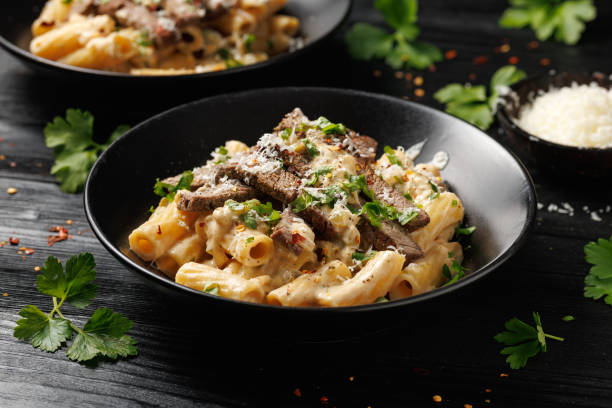
History of the Philly Cheesesteak
The history of the Philly cheesesteak dates back to the 1930s in Philadelphia, where it was first created by Pat Olivieri, a hot dog vendor. Legend has it that he decided to grill some beef on his truck one day, and a passing taxi driver was so intrigued by the aroma that he asked for a sandwich. This simple yet flavorful creation quickly gained popularity, leading to the establishment of Pat's King of Steaks and rival Geno's Steaks, both of which are still beloved institutions today.
Over the years, the classic cheesesteak has evolved from its humble beginnings into a cultural icon that represents Philadelphia's rich culinary heritage. The original sandwich typically consists of thinly sliced steak, sautéed onions, and melted cheese, served in a long hoagie roll. This combination has inspired countless adaptations, including the more recent transformation of this classic into a pasta dish. By incorporating pasta, chefs and home cooks alike have embraced this innovation, creating a wider appeal and allowing for diverse flavors and textures to shine through.
The transition from sandwich to pasta illustrates the ongoing evolution of food culture, blending traditional favorites with contemporary culinary techniques. Philly Cheesesteak Pasta captures the essence of the original sandwich while offering a new and comforting way to enjoy its hallmark flavors. This dish serves not only as a meal but also as a tribute to the vibrant and ever-changing landscape of American cuisine.
Ingredients for Philly Cheesesteak Pasta
When it comes to creating the perfect Philly Cheesesteak Pasta, selecting the right ingredients is crucial for achieving the authentic flavors reminiscent of the classic sandwich. Here are the essential ingredients needed for this hearty dish:
Essential Ingredients
- Pasta: Choose your preferred type, such as penne, fettuccine, or rigatoni. Longer pasta works well for catching the sauce, while short pasta provides a comforting bite.
- Thinly sliced beef: Ribeye or sirloin are excellent choices due to their tenderness and flavor. Ensure the beef is sliced thinly to cook evenly and absorb the sauce.
- Bell peppers: Sliced bell peppers add color, sweetness, and crunch to the dish. Use a mix of colors for visual appeal.
- Onions: Sweet onions, like yellow or Vidalia, caramelize beautifully and complement the beef and cheese.
- Cheese: The choice of cheese is vital for the dish's creaminess. Provolone, Cheez Whiz, or mozzarella are popular options that melt well and add rich flavor.
Optional Ingredients
To elevate your Philly Cheesesteak Pasta even further, consider adding some of the following optional ingredients:
- Mushrooms: Sautéed mushrooms can introduce an earthy flavor and enhance the texture.
- Garlic: Fresh garlic adds depth and aroma, making the dish even more irresistible.
- Spices: A pinch of black pepper and Italian seasoning can enhance the dish's overall flavor profile.
- Heavy cream: For a creamy version of the dish, heavy cream can be added to create a luscious sauce that coats the pasta beautifully.
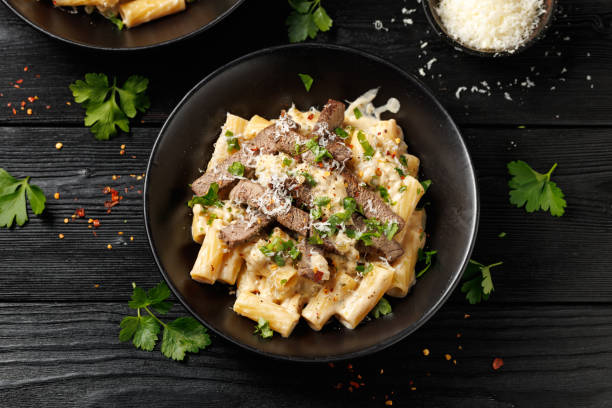
Directions for Making Philly Cheesesteak Pasta
Creating the perfect Philly Cheesesteak Pasta involves a series of simple steps that combine the ingredients into a harmonious dish. Follow this comprehensive recipe to bring a taste of Philadelphia into your kitchen.
Step-by-Step Recipe
1. Preparing Ingredients
Start by washing and slicing your bell peppers and onions. Aim for uniform slices to ensure they cook evenly. Thinly slice the beef, ensuring it is as thin as possible for maximum tenderness.
2. Cooking the Pasta
Bring a large pot of salted water to a boil and cook the pasta according to package instructions until it reaches al dente. Drain the pasta and set it aside, reserving a bit of the pasta water for later use if needed.
3. Sautéing the Vegetables
In a large skillet, heat a tablespoon of olive oil over medium heat. Add the sliced onions and bell peppers, cooking until they are soft and caramelized, about 5-7 minutes. Remove them from the skillet and set aside.
4. Cooking the Beef
In the same skillet, increase the heat to medium-high and add another tablespoon of oil if necessary. Add the thinly sliced beef, season with salt and pepper, and cook until browned, which should take about 3-4 minutes. Be sure not to overcrowd the pan, as this can steam the meat instead of browning it.
5. Combining Ingredients
Return the sautéed vegetables to the skillet with the beef. Add the cooked pasta to the mixture, tossing everything together gently over low heat to combine. If the dish seems dry, add a splash of reserved pasta water to achieve your desired consistency.
6. Melting the Cheese
Finally, add your choice of cheese (such as provolone or mozzarella) to the skillet. Stir the cheese until it melts and coats the pasta and meat mixture evenly. Remove from heat once the cheese is thoroughly melted and incorporated.
Alternative Preparation Methods
If you're looking for different ways to enjoy Philly Cheesesteak Pasta, consider these alternative methods:
- Skillet Version: Follow the above instructions for a quick and easy skillet dish.
- Oven-Baked Version: After combining the ingredients, transfer everything to a baking dish, top with additional cheese, and bake at 350°F (175°C) for about 15 minutes, or until bubbly.
- Slow Cooker Method: In a slow cooker, combine raw pasta, beef, vegetables, and cheese with sauce. Cook on low for 4-6 hours for a set-it-and-forget-it option.
Tips for Making the Best Philly Cheesesteak Pasta
Cooking Tips
To elevate your Philly Cheesesteak Pasta, keep these tips in mind:
- Choosing the Right Pasta: Opt for shapes that capture the sauce, such as rigatoni or penne.
- Beef Slicing Tips for Tenderness: Freeze your beef for 30 minutes before slicing to make it easier to achieve thin cuts.
- Cheese Melting Techniques: For a smoother melt, grate the cheese rather than slicing it.
Serving Suggestions
Enhance your meal with these serving ideas:
- Garnishing Options: Top your dish with fresh parsley or grated Parmesan for added flavor and presentation.
- Pairing with Sides: Serve with garlic bread or a fresh salad for a balanced meal.
Nutritional Information
Philly Cheesesteak Pasta can be a hearty meal packed with flavor. Here’s a brief breakdown of its nutritional information:
- Calories: Approximately 600-700 per serving, depending on ingredients used.
- Protein: Beef provides a good source of protein, around 30 grams per serving.
- Fats: The cheese and cooking oils contribute roughly 25 grams of fat.
- Carbohydrates: Pasta adds about 70-80 grams of carbohydrates.
For a healthier version, consider using whole wheat pasta, leaner cuts of beef, or low-fat cheese options.
Variations of Philly Cheesesteak Pasta
Vegetarian Option
If you're looking for a vegetarian twist, substitute the beef with sautéed mushrooms or a plant-based protein. This keeps the hearty texture while meeting dietary preferences.
Gluten-Free Option
For gluten-free diets, use gluten-free pasta available in many shapes and varieties, allowing everyone to enjoy this flavorful dish.
FAQs
Common Questions:
1. What is Philly Cheesesteak Pasta?
Philly Cheesesteak Pasta is a hearty dish that combines the beloved flavors of a classic cheesesteak sandwich with pasta, featuring ingredients like beef, cheese, and bell peppers.
2. Can I make Philly Cheesesteak Pasta ahead of time?
Yes! You can prepare most components in advance and combine them right before serving. Store leftovers in the refrigerator for up to 3 days.
3. What type of cheese is best for Philly Cheesesteak Pasta?
Popular cheese options include provolone, Cheez Whiz, and mozzarella, which melt well and offer rich flavors.
4. How do I customize this recipe?
Feel free to add your favorite vegetables, adjust the cheese type, or spice it up with additional seasonings!
5. What can I serve with Philly Cheesesteak Pasta?
This dish pairs wonderfully with garlic bread, a refreshing salad, or even some crispy fries for a complete meal!
Conclusion
The rich and savory flavors of Philly Cheesesteak Pasta are sure to delight anyone who tries it. This dish not only showcases the iconic components of the classic cheesesteak but also offers a unique twist that emphasizes comfort food at its finest. Don't hesitate to explore your own variations and enjoy the memories this meal can inspire!
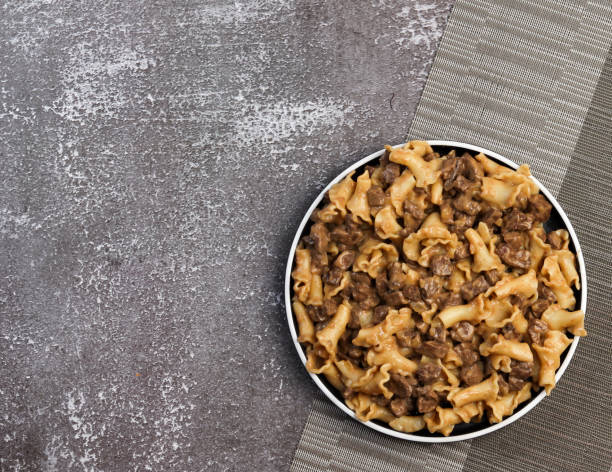
Philly Cheesesteak Pasta
Equipment
- 1 large pot
- 1 frying pan
- 1 colander
- 1 wooden spoon or spatula
- 1 measuring cups and spoons
Ingredients
- 12 oz penne pasta
- 1 lb beef steak, thinly sliced such as ribeye or sirloin
- 1 tablespoon olive oil
- 1 medium onion, sliced
- 1 red bell pepper, sliced
- 1 green bell pepper, sliced
- 2 cloves garlic, minced
- 1 teaspoon salt
- ½ teaspoon black pepper
- 1 teaspoon Worcestershire sauce
- 8 oz cream cheese, softened
- 1 cup beef broth
- 1 cup shredded provolone cheese can be substituted with mozzarella or American cheese
Instructions
- Cook the penne pasta according to package instructions in a large pot of salted boiling water. Drain and set aside.
- In a frying pan, heat olive oil over medium-high heat. Add the sliced beef and cook until browned, about 3-4 minutes. Remove the beef from the pan and set aside.
- In the same pan, add the sliced onion and bell peppers. Sauté until softened, about 5 minutes. Add minced garlic, salt, black pepper, and Worcestershire sauce; cook for an additional minute.
- Reduce the heat to medium and stir in the softened cream cheese until melted and smooth.
- Gradually add the beef broth, stirring until well combined and the sauce is creamy.
- Return the cooked beef to the pan, then add the drained pasta. Mix everything together until well coated with the sauce.
- Sprinkle shredded provolone cheese over the top, cover, and let it sit for a few minutes until the cheese melts.
- Serve hot, garnished with additional black pepper if desired.

